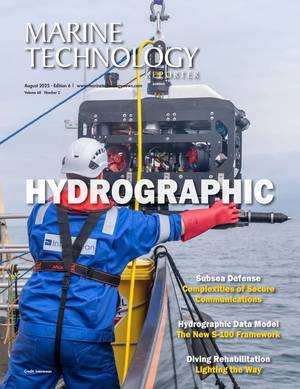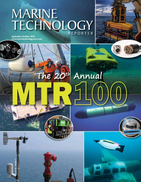Shipwreck Windfall: ROV Expedition Captures Maritime History
The chill, freshwater depths of Lake Ontario may not first come to mind when thinking about shipwrecks, but an expedition by the Ocean Exploration Cooperative Institute (OECI) at the University of Rhode Island (URI) is challenging that perception. Its star explorer? A compact but mighty Remotely Operated Vehicle (ROV) named Rhody. What began as a mission to support NOAA’s interest in high-resolution shipwreck documentation within the Lake Ontario National Marine Sanctuary has evolved into a dynamic academic research experience merging innovation, partnership and the expanding role of robotics in nearshore and inland underwater operations.
Preserved Beneath the Surface
Lake Ontario, one of North America’s Great Lakes, features a trove of submerged history. Beneath its waves lie hundreds—potentially thousands—of shipwrecks, many dating back to the era of westward expansion. These include wooden sailing schooners and early steam barges, vessels that once carried goods and dreams across the inland seas.
“We documented 17 shipwrecks during the expedition,” said Holly Pettus, project manager at OECI. "But within the lake in its entirety, there are hundreds or potentially thousands down there.”
You’re not alone if these numbers surprise you. Your correspondent, who for five years lived on the lake’s southern shore in Rochester, New York, had no idea about shipwrecks just below the waves.
“When you get offshore in Lake Ontario, it can have conditions very similar to the ocean, right? It's not tidily affected, but there it’s big enough that the fetch allows the wind to generate storms and waves on the lake that are sufficient to sink a vessel like these,” explained Jason Fahy, associate director at OECI. “A majority of the wrecks that we were looking at happened in this November and early December timeframe when shipping companies are trying to get the last delivery in before the lake freezes up. A big storm will come through and sure enough, it’ll sink vessels.”
 Jason Fahy and Holly Pettus. Credit: Marley Parker
Jason Fahy and Holly Pettus. Credit: Marley Parker
The shipwrecks served as a founding reason for the Lake Ontario National Marine Sanctuary, designated by the National Oceanic and Atmospheric Administration (NOAA) in 2024. The organization’s website states, “As the gateway between the Great Lakes and the ocean, the maritime landscape of this area represents connections between cultures, between a nascent nation and the frontier, and of commerce, opportunity and ingenuity.”
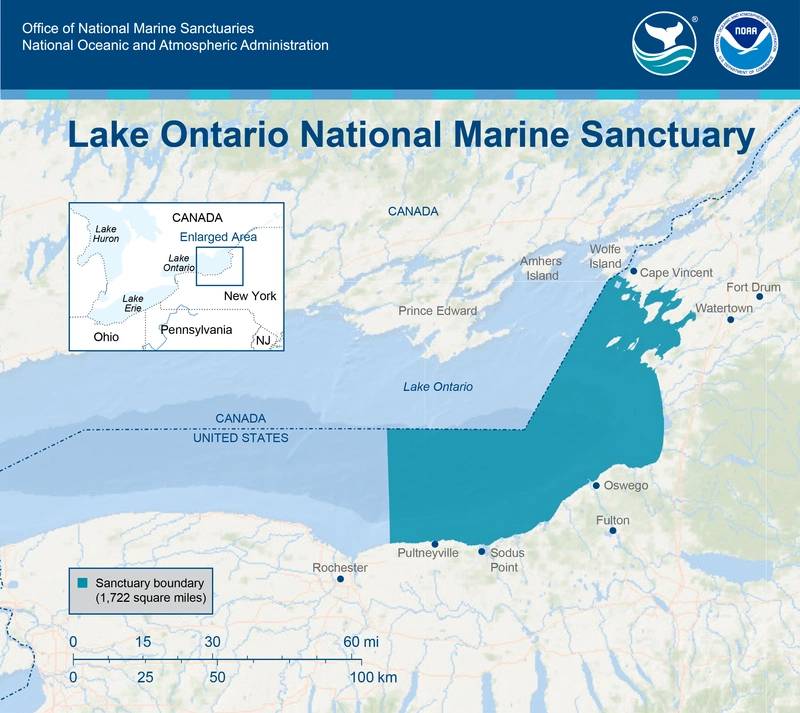 Lake Ontario National Marine Sanctuary, designated in September 2024. Credit: NOAA
Lake Ontario National Marine Sanctuary, designated in September 2024. Credit: NOAA
With historically rich treasures on the lake floor, yet limited documentation, NOAA contacted OECI to conduct a baseline survey. “We brainstormed the technologies and the way we could tell that story. And that snowballed into what became this project we just completed in May,” said Fahy.
Meet Rhody
Central to the success of this expedition was Rhody, a customized HD3-class ROV built in collaboration with JM Robotics. “I reached out to multiple vendors trying to select the right fit for our project,” said Fahy. “JM was really willing to work together on the customization of the vehicle for our purpose. And that's what really sold us.”
“What drew us to the vehicle was it has a unique ability to fly with six degrees of freedom. So, its maneuverability was the first thing that caught my attention," he added.
“What NOAA wanted from us were these high-resolution 3D models of the shipwrecks,” said Pettus. “And the body and the skid that we were able to integrate onto the HD3 robot allowed us to have all of those sensors to create those 3D models.” Adding the Discovery Stereo Camera from Voyis sealed the deal, allowing for a 4K video stream and still images that were ready for machine vision and 3D reconstruction.
 The Discovery Stereo camera from Voyis. Credit: Marley Parker
The Discovery Stereo camera from Voyis. Credit: Marley Parker
The vehicle is rated for 300 meters, ideal for shallow-to-mid-depth lake and coastal missions. It’s also compact—transportable in Pelican cases and deployable from small boats—making it perfect for scientific expeditions and rapid-response applications.
Deep Discoveries and Student-Led Science
The Lake Ontario mission was Rhody’s maiden voyage and it proved the ROV’s capability in real-world conditions. Each day varied slightly depending on the type of shipwreck. “Some of these wrecks had standing masts which would add a lot of survey time because for the photogrammetry you need pictures of every angle of what you're surveying,” explained Pettus. Most days, the team completed two surveys, although smaller wrecks allowed for up to four surveys in one day. And while ROV dives were limited to the daytime, mapping operations using a multi-beam sonar were conducted at night, filling in unmapped parts of the lake.
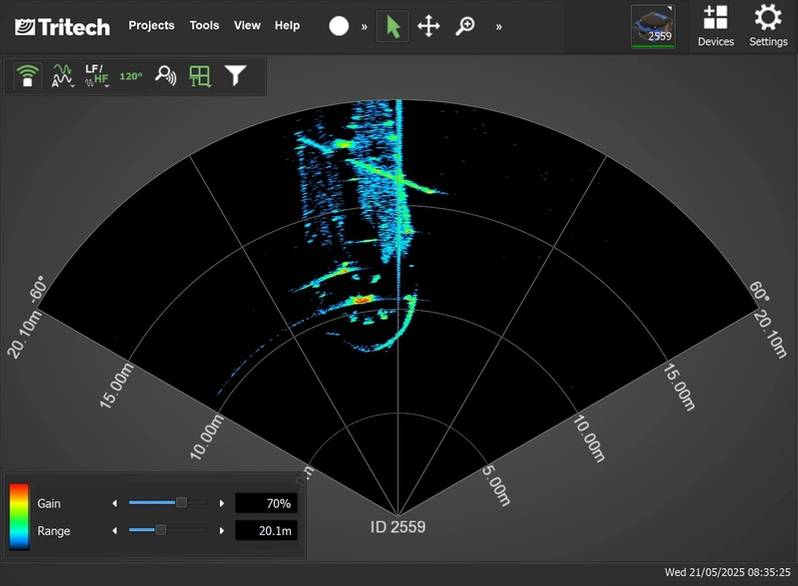 Sonar of the Farmers Daughter shipwreck. Credit: OECI/NOAA Office of National Marine Sanctuaries
Sonar of the Farmers Daughter shipwreck. Credit: OECI/NOAA Office of National Marine Sanctuaries
The mission also doubled as an educational platform. Students from URI joined the expedition, contributing directly to operations—from piloting Rhody to processing multi-beam sonar data. One undergraduate even discovered a previously undocumented wreck during a night mapping shift.
The project’s deliverables were as impressive as its methods: 750,000 images, dozens of hours of subsea video, and eventually, 17 photorealistic, scaled 3D shipwreck models to be delivered to NOAA. These digital artifacts will support both preservation efforts and public engagement, allowing viewers to explore submerged history in an accessible manner.
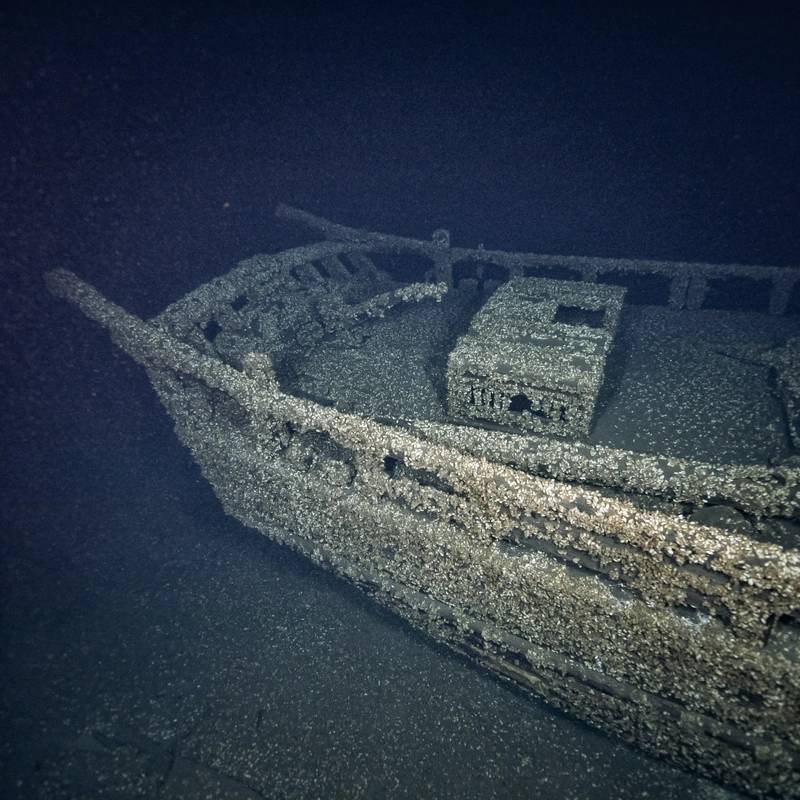 Farmers Daughter shipwreck. Credit: OECI/NOAA Office of National Marine Sanctuaries
Farmers Daughter shipwreck. Credit: OECI/NOAA Office of National Marine Sanctuaries Philip Becker shipwreck. Credit: OECI/NOAA Office of National Marine Sanctuaries
Philip Becker shipwreck. Credit: OECI/NOAA Office of National Marine Sanctuaries
“The initial results are compelling. The Voyis camera is exceptional; this is exactly what it's designed to do and it performed extremely well. I can't wait to share that with the public,” said Fahy.
The team was also struck by the quality of preservation of some of the shipwrecks. “We knew these shipwrecks were going to be extremely well preserved because of conditions in the lake,” explained Pettus. “But when we would approach a shipwreck with Rhody, it looked like it was just delicately set down on the lakebed.”
“If you're familiar with sailing schooners at all, on the front of the vessel on the bow, there's something called a dolphin striker. It protrudes from the bow, and there's a lot of rigging that's necessary to hold that in place,” she said. “And we saw one of those that was completely intact. All the rigging was still there. Our chief scientist was like a kid in a candy store when he got to see that."
The Rhod(y) Ahead
“We've got huge plans for little Rhody,” laughed Fahy. Upcoming projects include cold-water coral studies in the Gulf of Maine and participation in the documentation of the intentional sinking of the S.S. United States off the Florida coast to create an artificial reef. “This is a really cool opportunity because you can do a pre-sinking inspection to know what the current conditions are. After the vessel is sunk and the community starts to interact with it as a dive site, how it changes is an important scientific question to answer.”
Rhody may also see some modifications, including the addition of manipulator arms. “We're expanding its capability. Then we can do not only the survey work, but we can collect samples and actually interact with the seafloor or the lakebed as well,” explained Pettus.
The Lake Ontario expedition marked a milestone not only for the OECI and NOAA, but also for the wider underwater technology and marine heritage communities. In Rhody, the OECI team has developed more than just a robot—they’ve created a model for how adaptive technology, academic partnership and a spirit of exploration can unlock the mysteries of inland waters and beyond.
In a world increasingly reliant on remote and autonomous systems, Rhody proves that even small vehicles can make big discoveries.
Watch the interview with Jason Fahy and Holly Pettus on MTR TV.


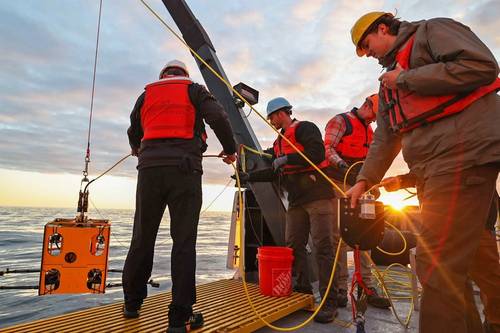
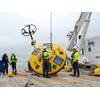
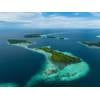
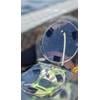










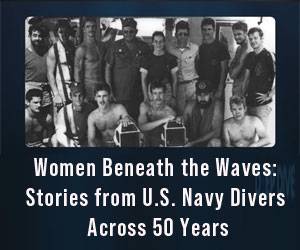
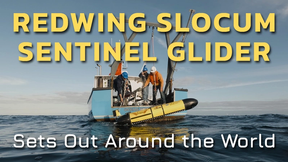
 August 2025
August 2025
